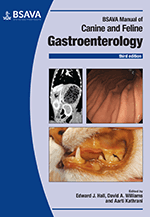
Full text loading...

This chapter describes the equipment and technique for gastrointestinal (GI) endoscopy, and explains the role of flexible and rigid endoscopy of the GI tract. Upper and lower GI endoscopy, normal appearance, technique for endoscopic biopsy, diagnostic laparoscopy and specialized techniques are also covered.
Endoscopy, Page 1 of 1
< Previous page | Next page > /docserver/preview/fulltext/10.22233/9781910443361-3e/BSAVA_Manual_Gastroenterology_3_9781910443361-3e.4.25-30-1.gif

Full text loading...











